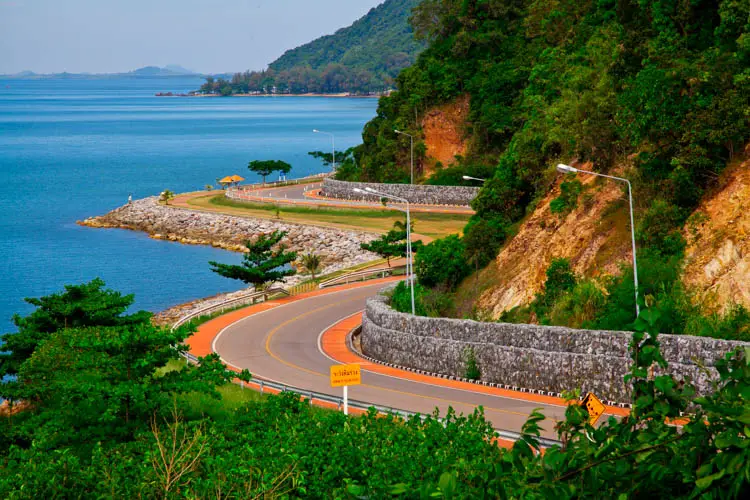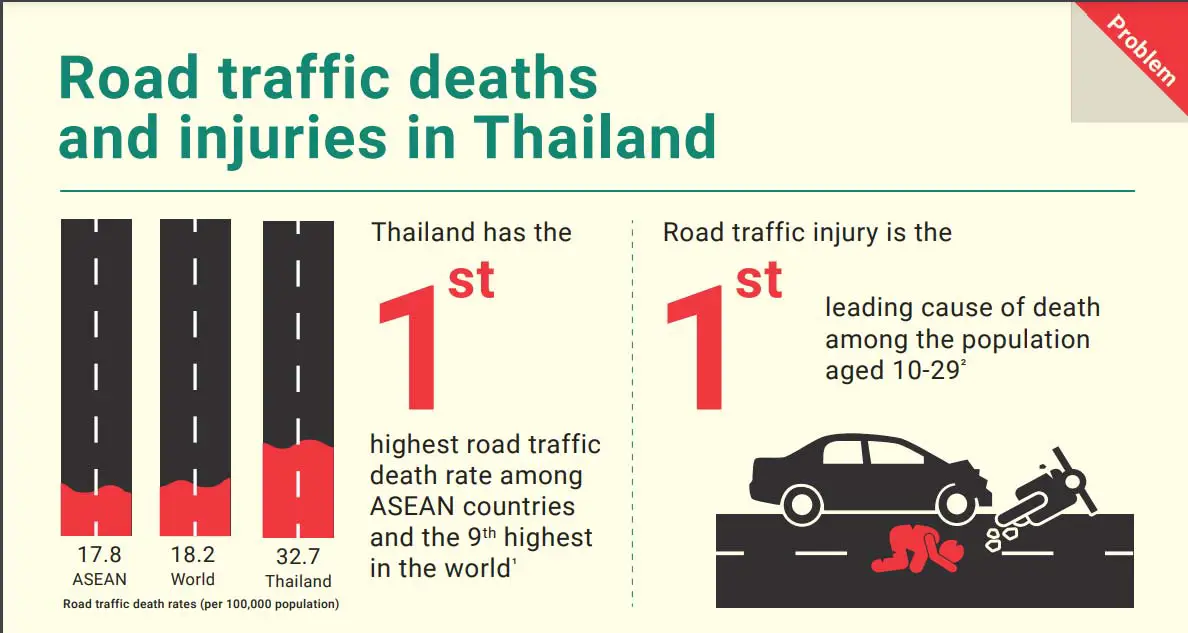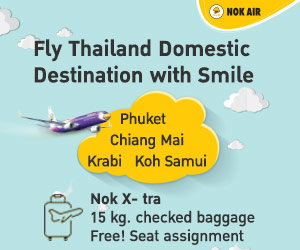Your Travel Guide to Thailand
All information & tips to prepare your trip in Thailand
Siam routes: the roads in Thailand
Condition of Roads in Thailand
 The roads in Thailand are generally of good quality. Especially in major cities like Bangkok, Chiang Mai, and Phuket, the main roads are well-maintained and paved. Highways and main roads (national roads) are in good condition and well-marked.
The roads in Thailand are generally of good quality. Especially in major cities like Bangkok, Chiang Mai, and Phuket, the main roads are well-maintained and paved. Highways and main roads (national roads) are in good condition and well-marked.
However, in rural areas and mountainous regions, roads can be in poor condition, with potholes and unpaved sections, even ending in dirt roads for the most remote corners. There are some areas where a 4x4 is indispensable. So, make sure to get proper information before venturing too far off the beaten path! Secondary roads can also be more challenging to navigate. Another important point, during the rainy season, torrential downpours can make traction very difficult and greatly reduce visibility (it's better to stop as soon as possible in a safe place and wait for the storm to pass). There can also be floods and occasional landslides.
Are the Roads in Thailand Dangerous?
Unfortunately, Thailand is known for having one of the highest road accident rates in the world. According to the World Health Organization (WHO), the Siam Routes regularly rank in the Top 10 most deadly roads in the world and the deadliest in ASEAN with a road mortality rate of 32.7 per 100,000 inhabitants in 2018, for example. This statistic places Thailand among the countries with the most dangerous roads in the world.
The main causes of accidents include:
- Drunk driving.
- Excessive speed.
- Failure to obey traffic rules.
- Lack of helmet use among motorcyclists.
It is important to note that deaths and injuries on the Siam Routes are mainly among people riding motorcycles or scooters. They represent 3/4 of the road victims in Thailand. That's why if you want to get around on your own during your trip to Thailand, I recommend renting a car rather than a scooter or motorcycle.

Traffic Rules in Thailand
The driving rules, I am not talking about the traffic code in Thailand but those that apply on Siamese roads, are quite different from ours. And it's not just because in Thailand, you drive on the left but also due to a management, for example, of priorities and overtaking that is nothing like what is done in Europe. Here are some basic rules to know before driving in Thailand:
- Driving on the left: Like in England, you drive on the left in Thailand.
- Speed limits: 60 km/h in the city, 90 km/h on secondary roads, and up to 120 km/h on highways.
- Helmet mandatory for motorcyclists.
- Seatbelt mandatory for all car occupants.
- Phone use while driving: Using a mobile phone without a hands-free kit is prohibited.
- A red light doesn't necessarily stop all cars: often, cars that are not going straight but turning can continue their journey despite the red light, which becomes more of a yield for them.
- Beware of two-wheelers: they can appear from anywhere, even from embankments. You often encounter them going against traffic on what should be the emergency lane.
- Beware of stray dogs: you also see a lot of dogs in inhabited areas on Thai roads. Especially at night but also during the day, many sleep on the road.
- Cutting curves: it is very common for Thais to cut curves in bends. Be particularly vigilant in the mountains.
Car Rental in Thailand
Renting a car in Thailand is relatively simple. And as I said, it is certainly more expensive than renting a scooter, but it's safer. Fatal accidents are much rarer and moreover, the requirements for renting a car in Thailand for a tourist and driving legally and covered by insurance are simpler than for a scooter (see my article on renting a scooter in Thailand). You can book your vehicle online via sites like Rentalcars.com or at car rental agencies located at airports and in major cities. Here are some important points to consider:
- International driving permit: It is mandatory to have an international driving permit in addition to your national license to drive a car legally.
- Insurance: Check that insurance is included in the rental contract and that it covers all types of damage.
- Suitable vehicle: Choose a vehicle suited to your itinerary. For mountainous roads, a 4x4 may be necessary.
- Price: Prices vary depending on the season and type of vehicle. Don't hesitate to compare several agencies to get the best rate.
Tips for Driving in Thailand
- Caution: Adopt defensive driving and always be vigilant, especially at night and outside of cities.
- GPS: Use a reliable GPS or navigation app to avoid getting lost.
- Gas stations: Gas stations are frequent on main roads but less present in rural areas. Fill up regularly.
- Follow local rules: Even if some rules may seem less strict, it is important to follow them for your safety and that of others.
Driving in Thailand can be an enriching experience, giving you the freedom to discover less touristy places at your own pace, creating a customized trip to Thailand by going off the beaten path. However, it is crucial to be well-prepared and to stay vigilant to fully enjoy your stay safely.
By following these tips and being aware of potential challenges, you will be able to explore the Siam Routes with peace of mind and discover the wonders that Thailand has to offer.


